- Home
- Simon Winchester
The Perfectionists Page 18
The Perfectionists Read online
Page 18
A heavy metal rotor disc, it turned out, had burst out of the engine; about half of it, torn into hot fragments, was to be found down in the villages of Batam Island. The fragments had rained down from the plane, smashing onto buildings but hitting no one.
What had happened was the nightmare of every jet engine manufacturer in the world. The Rolls-Royce Trent 900—specifically a 972–84 variant, which developed almost seventy thousand pounds of thrust and had cost Qantas Airways $13 million—had suffered what is known as an in-flight uncontained engine rotor failure. This is an exceptionally rare occurrence, but when it happens, it is invariably an exceptionally violent one, with hot metallic components from the engine fracturing and, rather than being enclosed by the metal casing, tearing through it and then being thrown out as shrapnel to tear through the wings and the fuselage of the aircraft.
Bundles of electrical cables, fuel tanks, fuel and oil pipes, hydraulic systems, mechanical systems, and a pressurized passenger compartment with highly vulnerable human bodies within—all these can be hit and damaged by ragged chunks of fast-flying metal. In the case of Qantas Flight 32, many were, and a tidal wave of destruction ricocheted through the aircraft. To the relief of all concerned, the damage and loss of control were successfully managed by a highly competent (and unusually numerous) crew on the flight deck.
The wholly destroyed Rolls-Royce Trent number two engine after the safe landing in Singapore of Qantas Flight 32 following an “uncontained rotor failure” inside the engine a mile high over Indonesia.
Photograph courtesy of the Australian Transport Safety Bureau.
But exactly what had taken place inside the engine to bring about this near catastrophe? To appreciate that, and to enter the ultraprecise but still Hadean nightmare that is the interior of a modern jet engine, requires some history—and a return to the time, not so long past, when aviation was a propeller-driven pursuit still available to the enthusiastic amateur rather than the digitized zealotry found in today’s commercial airline cockpits.
It was Frank Whittle, the first son of a Lancashire cotton factory worker turned tinkerer, who invented the jet engine. There were other contenders, although for the kind of engine most widely recognized nowadays—the air-breathing internal combustion engine that powers most jet aircraft today, and manifestly not the non-air-breathing rocket, which is technically a jet engine also—there are really only two. One was the Frenchman Maxime Guillaume, who secured the French government’s brevet d’invention Number 534,801 for a turbojet aero engine in April 1922; the other was Hans von Ohain, from Dessau in Saxony, who, in 1933, came up with what he felt certain was a workable design for “an engine which did not require a propeller,” and actually saw it made.
Frank Whittle conceived the basic idea of a jet engine while still a young flying student, though for want of the fee was unable to renew the patent. His first propeller-less jet plane flew in May 1941.
Photograph courtesy of the University of Cambridge.
Yet neither the French idea nor the German prototype flourished. The technical requirements for an engine that was destined to function in environments of extreme physical hostility, particularly with such a fierce predicted heat that would envelop all its working parts, were just too daunting for both the materials and the engineering skills available in Europe at the time. Also, it is worth noting that American laboratories were curiously blind and deaf to the idea of a turbine-powered engine as having any utility for the aircraft industry, and the United States pursued almost no research until the 1940s.
It was left to the diminutive Frank Whittle, therefore, to pursue the dream, fired by his famous criticism of the outmoded nature of propeller-driving piston engines, a condemnation that resonates today. “Reciprocating engines are exhausted,” he declared. “They have hundreds of parts jerking to and fro and they cannot be made more powerful without becoming too complicated.* The engine of the future must produce two thousand horsepower with one moving part: a spinning turbine and compressor.”
Modern jet engines can produce more than a hundred thousand horsepower—still, essentially, they have only a single moving part: a spindle, a rotor, which is induced to spin and, in doing so, causes many pieces of high-precision metal to spin with it. Jet engines are beasts of extreme complexity bound up within a design of extraordinary simplicity. All that ensures they work as well as they do are the rare and costly materials from which they are made, the protection of the integrity of the pieces machined from these materials, and the superfine tolerances of the manufacture of every part of which they are composed. Frank Whittle had to deal with these harsh realities for ten testing years, from the moment he had his grand idea in the summer of 1928. Every imaginable obstacle was put in his way during that decade. Nevertheless, he persisted.
Frank Whittle, five feet tall, slightly Chaplinesque in appearance, neat, punctilious, and seemingly made of compressed steel springs—as a youngster, he was a daredevil stunt flier and demon motorcyclist, an irritant to his instructors, and a mathematician of rare ability—first planted the seed at the end of his stint as a flight cadet at Cranwell, the Royal Air Force academy in the English Midlands. Cadets at the time were each obliged to write a short scientific thesis on a topic that interested them, and Whittle’s paper has since become a part of aeronautical legend: with all the hubris of a young man on the make, he titled it “Future Developments in Aircraft Design.”
At the time of his graduation from Cranwell, powered flight was only a quarter of a century old. The aircraft in which cadets such as Whittle trained were mostly biplanes—they had wooden frames, were in no sense streamlined, had no enhancements such as retractable undercarriages or pressurized cabins, flew at low altitudes, and trundled through the skies at speeds seldom exceeding 200 miles an hour. RAF fighters, in many ways more advanced than most, averaged a puny 150 miles per hour, and operated at only a few thousand feet above sea level.
Science fiction was the reading rage of the day, and to a reader such as Whittle, who consumed all the H. G. Wells and Jules Verne and Hugo Gernsback he could lay his hands on, the fantastical possibilities on offer (of high-speed flight, of mass transportation, of journeying in the stratosphere, to the moon, to outer space!) presented not just a contrast, but also, in his considered view, an achievable contrast. Whittle believed that all that the fantasists were offering could actually be achieved, and yet not, he insisted, with the reciprocating engines of the moment. A new and better kind of engine was needed. He later described the ideas he advanced in his memorable Cranwell thesis.
I came to the general conclusion that if very high speeds were to be combined with long range, it would be necessary to fly at great height, where low air density would greatly reduce resistance in proportion to speed. I was thinking in terms of a speed of 500mph in the stratosphere where the air density was less than one quarter of its sea-level value.
It seemed to me unlikely that the conventional piston engine and propeller combination would meet the power plant need of the kind of high speed/high altitude aircraft I had in mind, and so in my discussion of power plant I cast my net very wide and discussed the possibilities of rocket propulsion and of gas turbines driving propellers, but it did not then occur to me to use the gas turbine for jet propulsion.
It was fifteen months later, in October 1929, that the penny finally dropped. Whittle was by now a fully qualified general duties pilot, stationed in Cambridgeshire, and while training and teaching others to fly, he obsessively ruminated and calculated and imagined the kind of engine that could possibly make aircraft go lightning fast. All his designs involved some kind of supercharged piston engine. At the same time, he could see that even a modest increase in engine power, and thus aircraft speed, would require a very much larger and heavier engine—an engine probably much too big and heavy for any aircraft to carry. He was about to abandon the quest when, suddenly, one day that October, he had his brain wave: why not, he thought, employ a gas turbine as an engine, a gas tu
rbine that, instead of driving a propeller at the engine’s front, would thrust out a powerful jet of air from the engine’s rear? An idea that would change the world in unimaginable ways had come to Frank Whittle when he was just twenty-two years old.
His recent school days, and his later mathematical skills, reminded him that a propelling jet of the kind he was proposing would offer a working demonstration of Isaac Newton’s Third Law of Motion, propounded back in 1686. Newton (a Cambridge man, as it happens) had written that “for every force acting on a body, there is an equal and opposite reaction.” Under this law, a powerful jet being thrust from the rear of an aircraft engine would drive that aircraft forward with equal power and, in theory, at almost any imaginable speed.
Moreover, a gas turbine could also, in theory, be vastly more powerful than a piston engine, and for a very simple reason. A crucial element in any combustion engine is air—air is drawn into the engine, mixed with fuel, and then burns or explodes. The thermal energy from that event is turned into kinetic energy, and the engine’s moving parts are thereby powered. But the amount of air sucked into a piston engine is limited by, among other factors, the size of the cylinders. In a gas turbine, there is almost no limit: a gigantic fan at the opening of such an engine can swallow vastly more air than can be taken into a piston engine—as a rule of thumb, seventy times as much, in the early, Whittle-era jets. Seventy times as much air might not mean seventy times as much power—other factors come into play—but a good twenty times as much power is a reasonable and accepted figure.
Small wonder, then, that this was for the historians of inventions, of breakthroughs, a true eureka moment. It truly did represent, cliché though it may sound, a paradigm shift. And from that autumn day onward, Frank Whittle thought of little else than getting a gas turbine to work sufficiently well to propel an airplane, solving as he did so the endless raft of problems, technical and official, that kept the project from its immediate resolution. It would be ten years before the first working engine was fired up, and as so often happens, it was war that provided the spur.
Not at first, though. Few seemed interested: even though Whittle managed to apply for (and eventually be granted, in 1931) a patent for “Improvements Relating to the Propulsion of Aircraft and Other Vehicles,” and even though his officer colleagues at the air base spread the word that he was onto something remarkably innovative and original, he was rebuffed at every turn. The Air Ministry in particular said it had no interest, the three principal British makers of aero engines turned him away, and when, in 1935, it was time to renew his patent, he could not afford the five-pound fee—and the Air Ministry said in no uncertain terms it would not foot the bill out of government funds. Whittle was by then on the verge of giving up, and had developed plans for another kind of device altogether, one that had relevance not to air transport but to journeying by road. He let his cherished patent lapse—not, he thought grimly, that it had any residual value—except that, with the patent’s lapse, and with the release of the idea from his exclusive ownership, the world now had access to it, and that had consequences.
For, in 1935, Germany’s now-fast militarizing—and the interest in jet engines expressed by Hans von Ohain and the Heinkel Company and coincident fresh enthusiasm for turbine propulsion from the head of airframes at the Junkers factory, Herbert Wagner—placed it firmly in a position to develop a turbojet. Whether either man’s interest was spawned by the freeing of the Whittle patent has never been fully established, but the result was self-evident: come the mid-1930s, Germany had indeed become officially interested in producing an aircraft jet engine, while Britain, despite having the idea’s patented creator living with his new family and no money and no support for his ideas not fifty miles from the capital, and employed by no less than the Royal Air Force, was not.
This would all change once money was pumped into the project, and Whittle could begin translating his blueprints into test-bed engines and, eventually, see if his ideas would fly, literally. It was a firm of venture capitalists named O. T. Falk and Partners that eventually, in 1935, took the gamble. “Stratosphere plane?” was the note taken on September 11 of that year by the firm’s senior partner, Lancelot Law Whyte, who confessed to “falling in love at first sight” with the young officer. Despite the query of his notation, he later told his wife that the experience of first meeting Whittle (who by now was pursuing a doctorate at Cambridge, while on leave from the RAF) was akin to “meeting a saint in an earlier religious epoch.” Had one not known the end of the story, it might be easy to suppose that, with a beginning like this, all would inevitably end in tears. Far from it. It ends triumphantly, with the saint indeed performing all the miracles expected of him. And Lancelot Law Whyte emerges from the story as a visionary, a man undeservingly forgotten. He had once been a physicist; he was anything but a coldhearted banker, but was an almost mystical figure, who loved Whittle’s idea not because it might make money, but because of its sheer elegance, and because “every great advance replaces traditional complexities by a new simplicity. Here it was in the iron world of engineering.”
The firm offered a three-thousand-pound advance and established a company for Whittle, to be named Power Jets Limited. There was little by way of aviation experience among the principals—one of the main shareholders made cigarette vending machines—but Frank Whittle was made chief engineer, and the company’s only employee. The Air Ministry (his usual employer, as he was a serving air force officer) agreed for him to be briefly separated from his military duties, though noting that his work for Power Jets was to be spare-time employment only, with his devoting no more than six hours a week to this newfangled idea.
The ministry’s support may have been given grudgingly, but it was nonetheless given,* and it was this official “Oh, alright then” backing that convinced Whyte to get going. He placed an immediate contract with the turbine makers British Thomson-Houston† to develop an engine to Whittle’s specifications. It was to have a turbine spinning at 17,750 rpm that would drive a compressor and produce 500 hp, with the outflowing air creating enough propulsive power to fly a small mail-delivery airplane. It would be called the WU, or “Whittle Unit.” Whittle envisaged it as fast enough to carry some few tons of mail across the Atlantic Ocean, nonstop, in about six hours.
At the distance of eighty years, it is scarcely possible to appreciate the revolutionary novelty of this idea. This was no invention that was happened upon by chance. This was a well-planned, carefully thought-out, and diligently evaluated creation of an entirely new means of propulsion, of transportation. This was the moment (or the invention, or the personality) that took the standard model of precision and transported it from the purely mechanical world into the ethereal. What was about to be constructed was a device of transcendental beauty, and though it might be said that mankind has taken the invention of the jet engine and quite spoiled the world with it, the thing itself had then and has still elegance and integrity like few other modern creations.
The basic principle of the turbine engine was already well established, and turbines were already being made (not just by firms such as British Thomson-Houston, but all over the world). Gas turbines were already beginning to power ships, to generate electricity, to run factories. The simplicity of the basic idea was immensely attractive. Air was drawn in through a cavernous doorway at the front of the engine and immediately compressed, and made hot in the process, and was then mixed with fuel, and ignited.
It was the resulting ferociously hot, tightly compressed, and controlled explosion that then drove the turbine, which spun its blades and then performed two functions. It used some of its power to drive the aforementioned compressor, which sucked in and squeezed the air, but it then had a very considerable fraction of its power left, and so was available to do other things, such as turn the propeller of a ship, or turn a generator of electricity, or turn the driving wheels of a railway locomotive, or provide the power for a thousand machines in a factory and keep them running, tir
elessly. Chemical energy, produced by mixing air and fuel, was thus transformed into mechanical energy. Mechanical energy was often just what was needed, to drive a ship or a factory, but if it then drove a generator, there was another level of transformation, of mechanical energy being transformed into electrical energy.
Frank Whittle was interested only in the transformation of chemical into mechanical energy. Electricity was to him of only peripheral interest. Yet he wanted the mechanical energy not simply to drive a spinning shaft. He wanted it to create a propulsive jet of gas—and further, he wanted the device that changed chemical energy into this propulsive jet to be light enough to be carried aloft, and efficient enough to make a jet engine good sense economically. This meant that the engine components had to be made with the greatest of care, to very exacting standards, and to be allowed to operate in the harshest of environments. This is what Power Jets and BTH set out to do, starting in 1936. It proved technically difficult in the extreme, and just when Hitler was starting to breathe down everyone’s neck.
Heat was probably the trickiest problem. The engine’s combustion chamber would create temperatures quite unknown to anyone then involved with burners and boiler-firing equipment. Bearings, too, presented problems—no one had ever invented a bearing that would do its work in the kind of temperatures and pressures likely to be encountered in the beating heart of a jet engine. And the experiments that BTH had to perform—testing fires at all kind of temperatures, testing bearings to their breaking point, producing billowing fumes and dangerous lakes of fuel, and explosions, explosions all the while—no one could explain what was going on, because all was classified top-secret.
It was perhaps just as well, as the first test runs of a completed engine were a near-total disaster. They took place in April 1937, with the plant outside the town of Rugby, in the English Midlands, well prepared for catastrophe—if turbine pieces fracture and get thrown out of an engine, they can be lethal. In an incident some weeks prior, a conventional turbine had exploded and hurled chunks of red-hot metal two miles away, killing several people en route. So the test engine was mounted on a truck (which, because its starter motor weighed a couple of tons, had to have its wheels removed) and was shielded by three pieces of inch-thick steel. Its jet pipe was routed out of a window, and the control for the starter motor was several yards away, with Whittle giving his orders by hand signal to the brave or foolhardy fitter employed to work it.

 The Surgeon of Crowthorne
The Surgeon of Crowthorne Korea: A Walk Through the Land of Miracles
Korea: A Walk Through the Land of Miracles The Men Who United the States: America's Explorers
The Men Who United the States: America's Explorers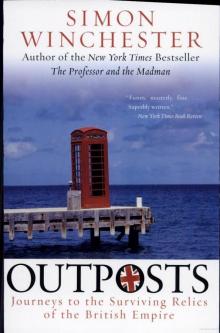 Outposts: Journeys to the Surviving Relics of the British Empire
Outposts: Journeys to the Surviving Relics of the British Empire Atlantic: Great Sea Battles, Heroic Discoveries, Titanic Storms
Atlantic: Great Sea Battles, Heroic Discoveries, Titanic Storms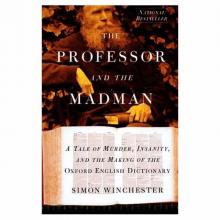 The Professor and the Madman: A Tale of Murder, Insanity
The Professor and the Madman: A Tale of Murder, Insanity A Crack in the Edge of the World
A Crack in the Edge of the World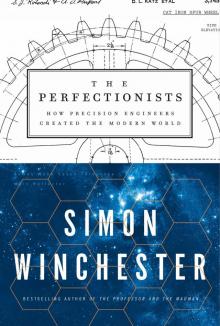 The Perfectionists: How Precision Engineers Created the Modern World
The Perfectionists: How Precision Engineers Created the Modern World The Man Who Loved China: The Fantastic Story of the Eccentric Scientist
The Man Who Loved China: The Fantastic Story of the Eccentric Scientist The River at the Center of the World: A Journey Up the Yangtze
The River at the Center of the World: A Journey Up the Yangtze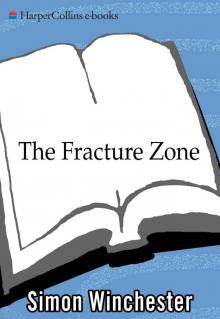 The Fracture Zone: My Return to the Balkans
The Fracture Zone: My Return to the Balkans The Map That Changed the World
The Map That Changed the World Krakatoa: The Day the World Exploded
Krakatoa: The Day the World Exploded The Man Who Loved China
The Man Who Loved China The River at the Centre of the World
The River at the Centre of the World Bomb, Book and Compass
Bomb, Book and Compass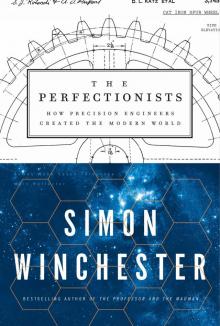 The Perfectionists
The Perfectionists The Meaning of Everything
The Meaning of Everything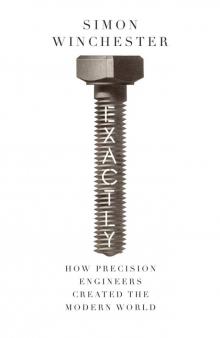 Exactly
Exactly Atlantic
Atlantic Korea
Korea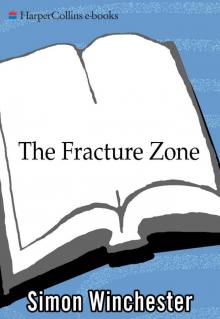 The Fracture Zone
The Fracture Zone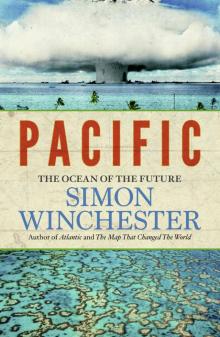 Pacific
Pacific Krakatoa
Krakatoa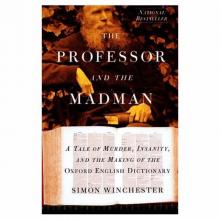 The Professor and the Madman
The Professor and the Madman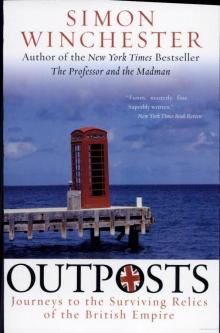 Outposts
Outposts